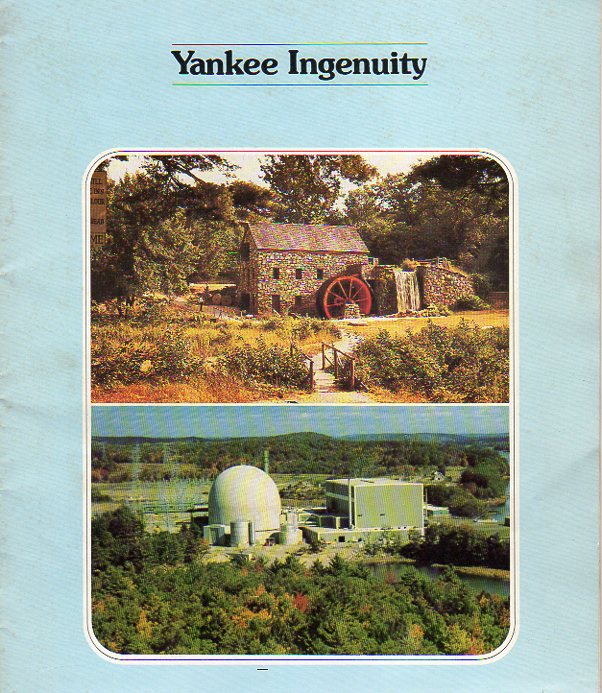Nuclear Energy Blog Carnival 247
The 247th edition of the Nuclear Energy Blog Carnival has posted at Neutron Bytes.

The 247th edition of the Nuclear Energy Blog Carnival has posted at Neutron Bytes.
by Beth Kelly
The 246th edition of the Nuclear Energy Blog Carnival has posted at the Energy Reality Project.
The 245th edition of the Nuclear Energy Blog Carnival has posted at the Hiroshima Syndrome's Fukushima Commentary.
This is the last of the three-part series presenting the opinions of nuclear industry experts on the closing of Vermont Yankee. Thank you to Dan Yurman for helping to coordinate all of the authors/articles in this three-part series.
This is the second of three posts presenting the professional opinions of experts in the nuclear field on the Yankee Vermont closing.
Although the nuclear power station known as Vermont Yankee had another 18 years left on its license, it was shut down for economic reasons at the end of 2014. Entergy Corporation,the plant's owner, and others have cited the low price of natural gas in the region as deterministic, but the reality is that many other issues were also at play.
By Leslie Corrice

There was a time in our not too distant past when a brochure such as that above-entitled "Yankee Ingenuity," and published in 1982 by the Nuclear Information Committee of the Electric Council of New England-carried a message that rang true. The imagery of the mill house, as an early cornerstone of commerce employed widely across New England, was coupled with the image of a nuclear power plant. The Northeast had a tendency for doing what was necessary to advance commerce and break away from foreign control. In short, it was the "Yankee spirit."
by Jim Hopf
On Saturday, December 13, there weren't balloons or cake but a plume of water vapor indicated that operations continued as Energy Northwest employees commemorated 30 years of Columbia Generating Station's commercial operation.
The continued introduction of renewables onto the electric grid in the United States is ensuring that discussion of whether or not these assets can be integrated with existing or expected designs of other sources continues. In this discussion, nuclear energy is often wrongly described as "on or off"-but in fact, nuclear plants can and do load follow (respond to changing system demands) although it's a matter of both design and owner utilization-with a focus on economics-that determines if or when any actually do.
PBS television is premiering on December 9 the documentary "Rickover: The Birth of Nuclear Power" at 7 pm Central time. (Please check TV listings for scheduled viewing times in your area. Not all PBS stations will air the documentary on December 9.)
On November 28, 2014, "Block 3" (or the third unit) at the massive Zaporizhia Nuclear Generating Station in Ukraine experienced a fault in electrical transmission equipment outside the nuclear portion of the plant itself. This fault essentially caused the 1000-MW rated nuclear plant to have nowhere to send that large amount of power it was generating, per its design. The nuclear plant tripped off its turbine generator (opening its output breakers) and scrammed the reactor. In the world of power generating equipment anywhere, no matter the power source, this type of event is fairly common. This scenario is possible when severe storms play havoc with the grid during intense lightning.
On November 5, the day before a scheduled quarterly conference call with investors and analysts, Babcock & Wilcox (NYSE:BWC) announced that it was splitting into two separate publicly traded companies.